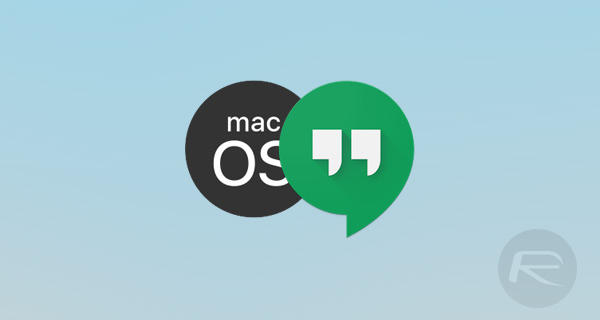
Next, here's the recording taken in the studio: Your basic white smartphone earbuds with micįirst, here's the recording using the smartphone earbuds and mic, connected to my desktop iMac:
#Google hangouts mac pro#
Constitution using both a smartphone earbud mic shown below and the pro mic and gear that's in my studio. In order for you to appreciate what studio-quality sound can do for your recordings, I recorded two 20-second clips of the U.S.
#Google hangouts mac professional#
If you want to set up a professional studio in a spare room, whether for Skype, Hangouts, or other projects, this series will get you started. Because the Skype Studio Project is no longer just about Skype, as of this article, we're officially rechristening the project to the Spare Room Studio. I wanted the same quality audio to work in Hangouts, and, as it turns out, it does. Over time, Hangouts became more and more popular and I started doing Hangouts in addition to Skype interviews. But what does that have to do with Hangouts? After buying and setting up the gear I'm going to describe to you here, I was able to dial in with Skype and do my webcasts with much higher quality audio. It was time to bring the sound in the studio up to a professional level. My previously fine land line suffered from bad, crackly sound. But sometime after I installed that line, land lines became anachronisms and the phone companies spent far less time, attention, and money maintaining them.

I used to call into the webcasts using a dedicated AT&T land line, which gave me very good quality with the audio bridge.
:max_bytes(150000):strip_icc()/001-using-google-hangouts-on-smartphone-3426595-1377eca731d04cefb9068980a7b09d6a.jpg)
It became front and center for my work doing webcasts here for CBS Interactive. Suddenly, one day, the sound in my studio no longer was a side project interest. I couldn't just use a set of smartphone earbuds with a mic, because I needed to mix in the audio from Skype as well as the audio from my sound input port, and then route that to another program.
#Google hangouts mac software#
I dumped that into the Mac mini I was using (I'm still using it, in fact) and then tried to use a free, barely supported software product called SoundFlower to route sound between the mic, Skype, any guests I had on Skype, and the video production product I use, Boinx TV. I used an old mixer I had sitting in one of my gear bins since the mid-1990s and hooked it up with an old Radio Shack lavalier lapel mic that was so old, the Radio Shack box had turned yellow. I not only had to build in soundproofing, I had to record quality audio. That was way back in September of 2011, and whenever I've had some spare time, I've been improving on the original design.
:max_bytes(150000):strip_icc()/chromehamburgermenu-142fd076a31549ac9acda430d1e2ab9a.jpg)
When we bought our fixer-upper house, there was a small 9x10 room that we thought would lend itself to being an ideal studio, and the Skype Studio project was born. I decided to build it because I was doing a lot of video appearances as a result of my books, and the quality of those appearances, to be kind, was pretty bad. I introduced what I then called my Skype Studio project to you as my very first article here on ZDNet's DIY-IT.


 0 kommentar(er)
0 kommentar(er)
